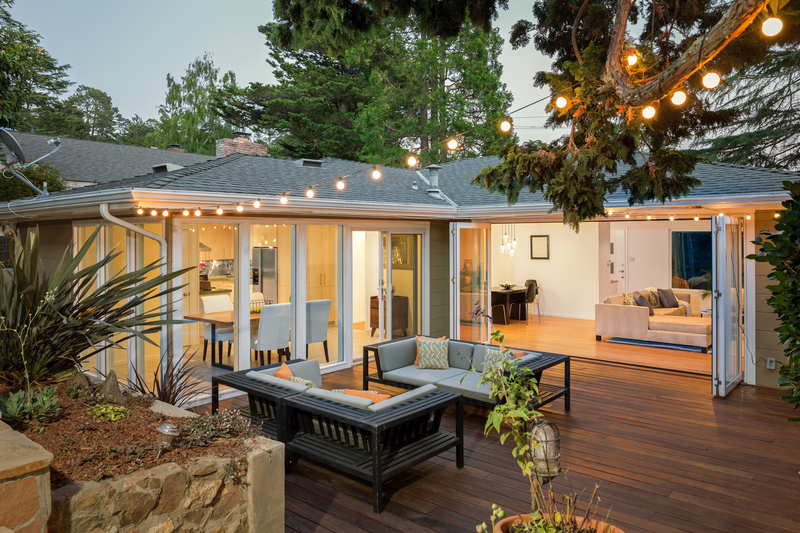Discover How to Create a Flexible Garden: Your Ultimate Guide
Are you looking to cultivate a garden that adapts to your evolving needs, changing climates, and shifting design preferences? Welcome to the world of flexible gardening! Discover how to create a flexible garden with three expert tips designed to make your outdoor space not only beautiful but also adaptable and future-proof. Whether you're working with a cozy balcony, a sprawling backyard, or something in between, this comprehensive guide will help you transform your space with confidence.

What Does "Flexible Garden" Mean?
A flexible garden is an outdoor area that can easily change and adapt to your lifestyle, needs, and environmental factors. Unlike static landscaping, a responsive or versatile garden structure allows for functional updates and seasonal adjustments. This approach empowers you to enjoy your outdoor area year-round and make the most out of your available space.
Below, we'll explore the essentials of flexibility in gardening and discover how to create a versatile garden space you'll love for years.
Why Choose a Flexible Garden Layout?
From shifting weather patterns to changes in your household, having a flexible garden design is the key to ensuring long-term enjoyment and usability. Here's why so many garden enthusiasts are opting for adaptable landscapes:
- Seasonal adaptability: Swap out plants, decor, and features as the seasons change, keeping your space looking fresh and vibrant.
- Functional diversity: Use the same area for multiple purposes--hosting gatherings, growing vegetables, or creating a child-friendly play zone.
- Easy maintenance: Streamline chores and upkeep by designing for simple rearrangement and accessibility.
- Future-proof investment: Accommodate changes in lifestyle, family composition, or aesthetic trends without a costly overhaul.
Ready to get started? Let's discover how to create a flexible garden with three essential expert strategies!
Expert Tip 1. Embrace Modular Features for Ultimate Flexibility
What Are Modular Garden Features?
Modular gardening is the backbone of any flexible backyard or patio design. These customizable elements allow you to rearrange your garden layout with minimal effort. Discover modular solutions that bring versatility to your outdoor space:
- Planter boxes and raised beds: Movable containers let you reorganize your garden fast, making it simple to change themes or replant for each season.
- Portable seating: Lightweight chairs, benches, and outdoor poufs can easily be repositioned to suit different gatherings or solo relaxation.
- Temporary partitions: Freestanding trellises, screens, or living walls create private pockets; just move or fold them away as needed.
- Outdoor rugs and mats: Define "rooms" within your garden that can shift as your needs evolve.
How to Implement Modular Features in Your Garden
- Assess Your Space: Start by mapping out areas that require the most flexibility--such as entertaining zones, children's play areas, or kitchen gardens.
- Choose Movable Pieces: Prioritize lightweight materials such as resin, rattan, or aluminum for outdoor furniture and planters. These ensure easy rearrangement.
- Section Your Garden: Use movable containers, modular pavers, and rugs to divide your space into functional "zones" that can be updated on a whim.
By focusing on modularity, you'll discover how to create a flexible garden layout that's always ready for what comes next.
Expert Tip 2. Select Multi-Functional Plants and Accessories
Why Multi-Functional Elements Matter
When learning how to create a flexible garden, it's essential to invest in plants and accessories that perform more than one role. This approach not only saves space but also enhances the resilience and beauty of your garden.
Top Multi-Functional Plants for Adaptable Gardens
- Herbs and Edibles: Plants like basil, rosemary, or tomatoes serve double duty--enhancing your garden's look and providing fresh ingredients for your kitchen.
- Pollinator-friendly flowers: Choose blooms that both beautify your space and support bees, butterflies, or birds, increasing biodiversity.
- Groundcovers: Creeping thyme, clover, or oregano reduce the need for mowing and suppress weeds, while offering edible or aromatic benefits.
- Ornamental grasses: Add texture, privacy, and windbreaks all at once with resilient varieties like fountain grass or blue fescue.
Flexible Accessories That Make a Difference
Beyond plants, look for accessories that combine decorative and practical functions:
- Multi-purpose furniture: Benches with built-in planters or storage, folding tables, and convertible loungers maximize your space and adapt to events.
- Solar lighting: Brighten pathways or highlight garden features with repositionable solar lights--no need for wiring or permanent installations.
- Weather-resistant textiles: Outdoor cushions and curtains bring color and comfort, and can be swapped out or moved as seasons change.
Implementation Tips for Maximum Flexibility
- Mix perennials and annuals so your garden always has something new--it keeps the look fresh and the care routine manageable.
- Opt for self-seeding or easy-to-divide plants that regenerate and fill in empty spaces naturally.
- Incorporate lightweight planters and portable decor to make updates simple and quick.
With this mix-and-match approach, you'll discover how to create a garden that's not only flexible but also bursting with function and style.
Expert Tip 3. Prioritize Sustainable and Low-Maintenance Elements
The Role of Sustainability in Flexible Gardens
Creating an adaptable outdoor space isn't just about moving elements around--it's also about future-proofing your choices. Resilient plantings and smart materials reduce your long-term workload and create a garden that continues thriving, even as circumstances change.
Sustainable Choices for a Flexible Garden
- Native plants: These require less water, fertilizer, and maintenance, making them ideal for ever-changing conditions.
- Permeable paving: Let rainwater soak into the soil, reducing runoff and preventing flooding in heavy storms.
- Compost bins or worm farms: Position these so they can be moved as you redesign your garden, keeping soil healthy and minimizing waste.
- Automatic irrigation systems: Drip lines and programmable sprinklers are easy to expand or reposition as your garden grows and shifts shape.
Low-Maintenance Strategies for Adaptability
- Create planting zones with similar water and sunlight needs, making it easy to rearrange or add new plants without disrupting established beds.
- Mulch extensively to suppress weeds, conserve moisture, and create a finished, easily refreshed look.
- Use hardy groundcovers in tricky areas instead of lawn--these fill gaps and adapt well to change.
- Consider smart technology--app-controlled sprinklers, lighting, or robotic mowers that can be adapted as your landscape evolves.
By weaving sustainability into your design, you'll discover how to create a flexible, eco-friendly garden that remains beautiful and manageable with minimal input.
Bonus: Design Inspiration for a Flexible Garden
Flexible Garden Ideas for Every Size
- Small yards: Use vertical planters, hanging baskets, and stackable seating to make the most of tight spaces.
- Balconies: Modular shelves, roll-out turf, and folding tables create instant garden rooms that transform as needed.
- Large backyards: Combine movable raised beds, freestanding garden screens, and adjustable shade sails for big impact with little commitment.
Trendy Themes for Adaptable Gardens
- Urban oasis: Mix industrial planters with lush, seasonal greens for a fresh, city-friendly look.
- Wildlife sanctuary: Choose versatile native plants and moveable water features to support local fauna year-round.
- Family zone: Include modular play equipment, picnic seating, and flexible storage that grows with your household.

Frequently Asked Questions About Flexible Gardens
What's the best way to keep my garden design adaptable?
Focus on multi-use furniture, portable planters, and easy-to-change decor. Avoid installing permanent hardscaping unless absolutely necessary; instead, opt for moveable pavers, lightweight partitions, and mobile containers.
How can I keep my flexible garden low-maintenance?
Use native, drought-tolerant plants, set up an automated watering system, and mulch all plant beds thoroughly. Design your zones to support quick, seasonal swaps with minimal digging or construction.
Can I create a flexible garden on a tight budget?
Absolutely! Repurpose old furniture, use salvaged materials for raised beds, and start small with container gardens. Many flexible garden ideas are DIY-friendly and don't require professional installation.
Conclusion: Start Building Your Flexible Garden Today
As you've seen, it's entirely possible to craft an outdoor space that responds to your needs, changes with the seasons, and makes outdoor living easier and more enjoyable. Discover how to create a flexible garden by embracing modular features, multi-functional plants, and sustainable practices.
Ready to get started? Audit your outdoor area, invest in a few key elements, and think creatively about how your garden can serve you year-round. The beauty of a flexible garden is that it never stops evolving--and neither should your connection with nature!
Transform your garden into an adaptable, dynamic retreat--one season at a time!